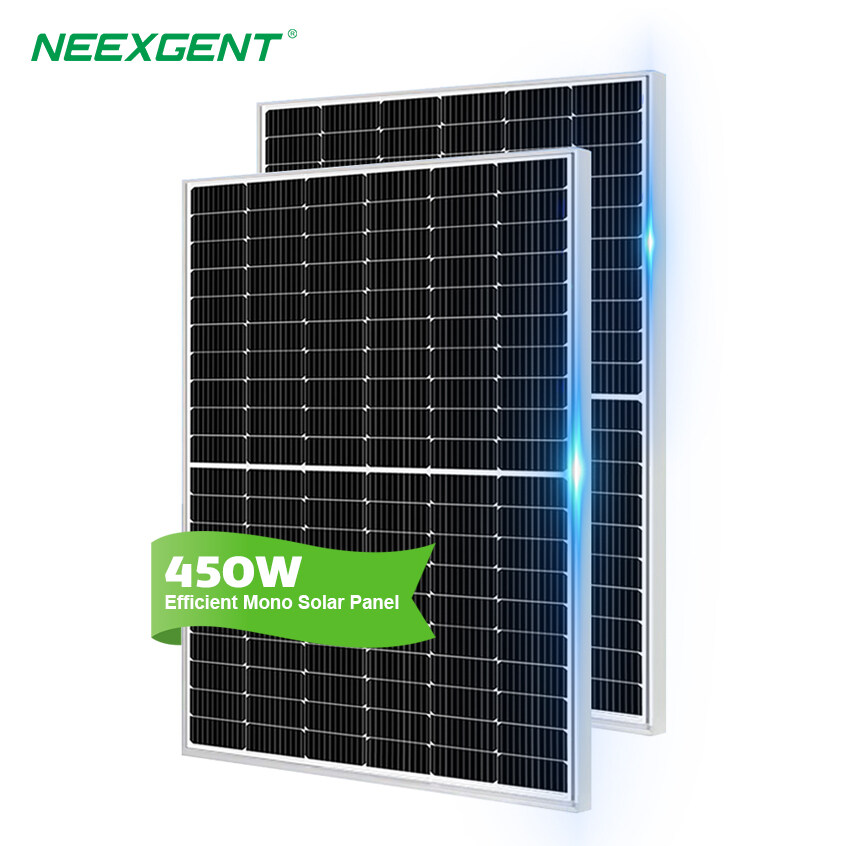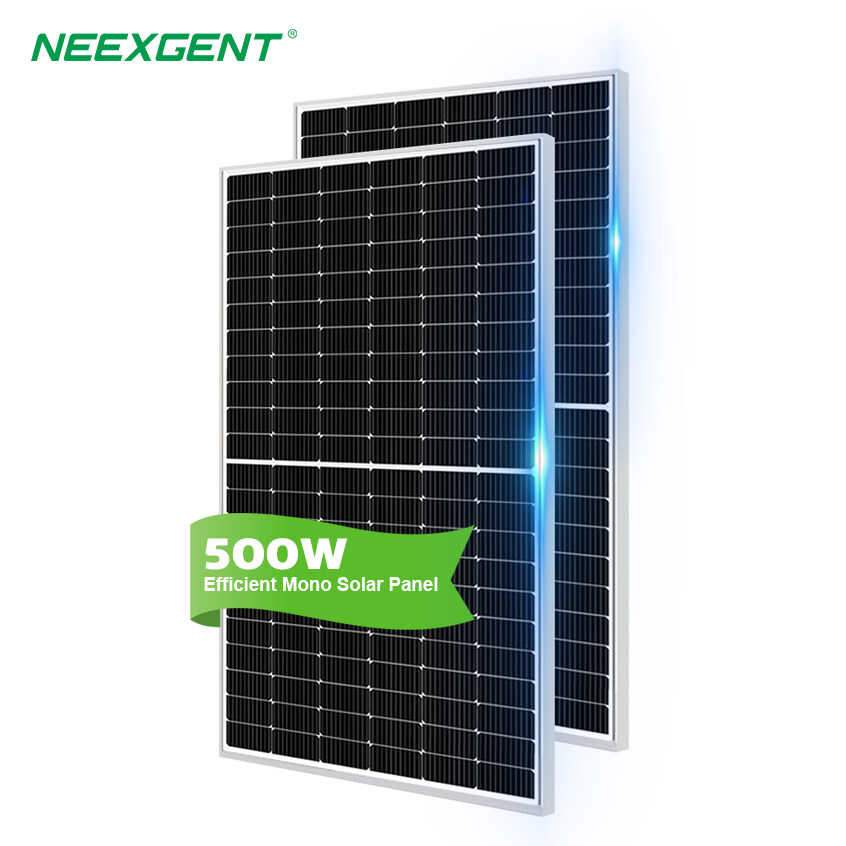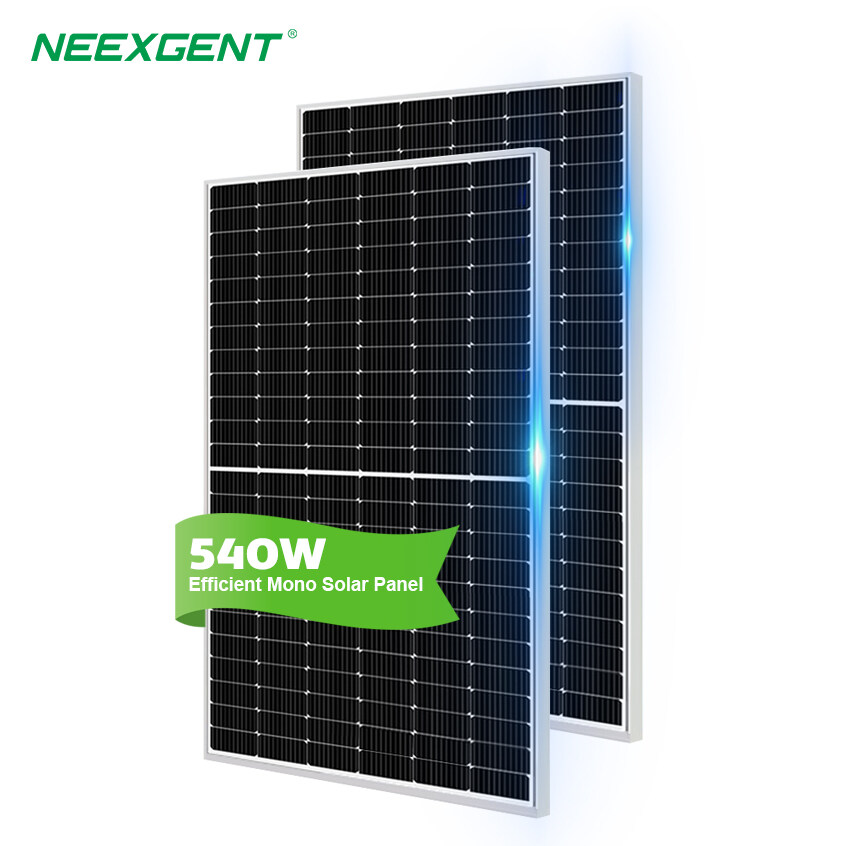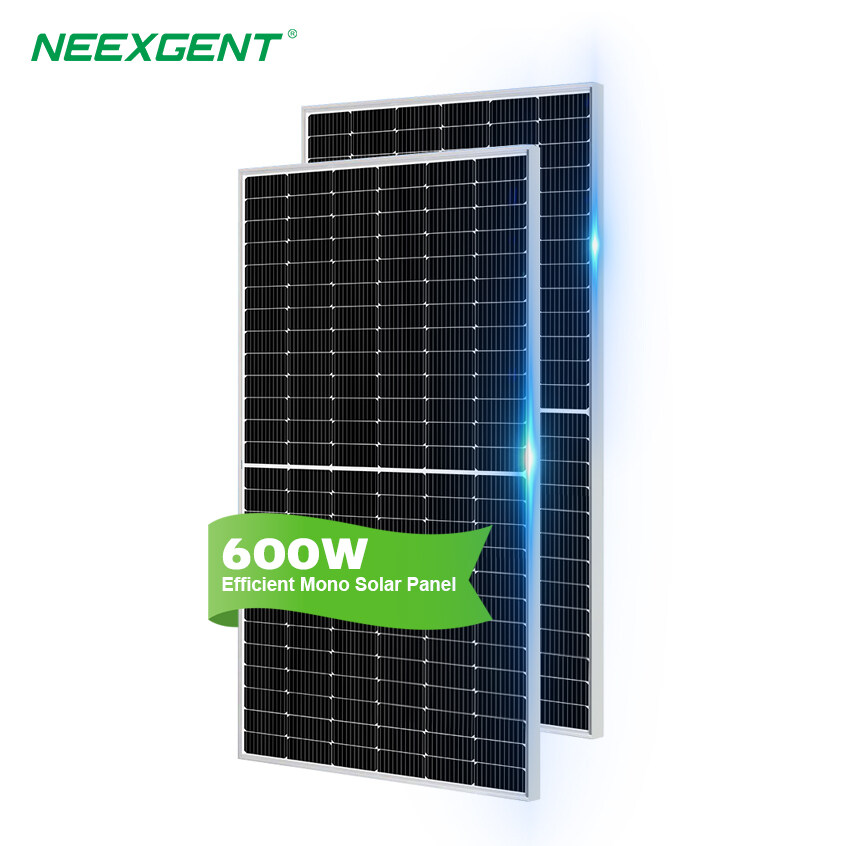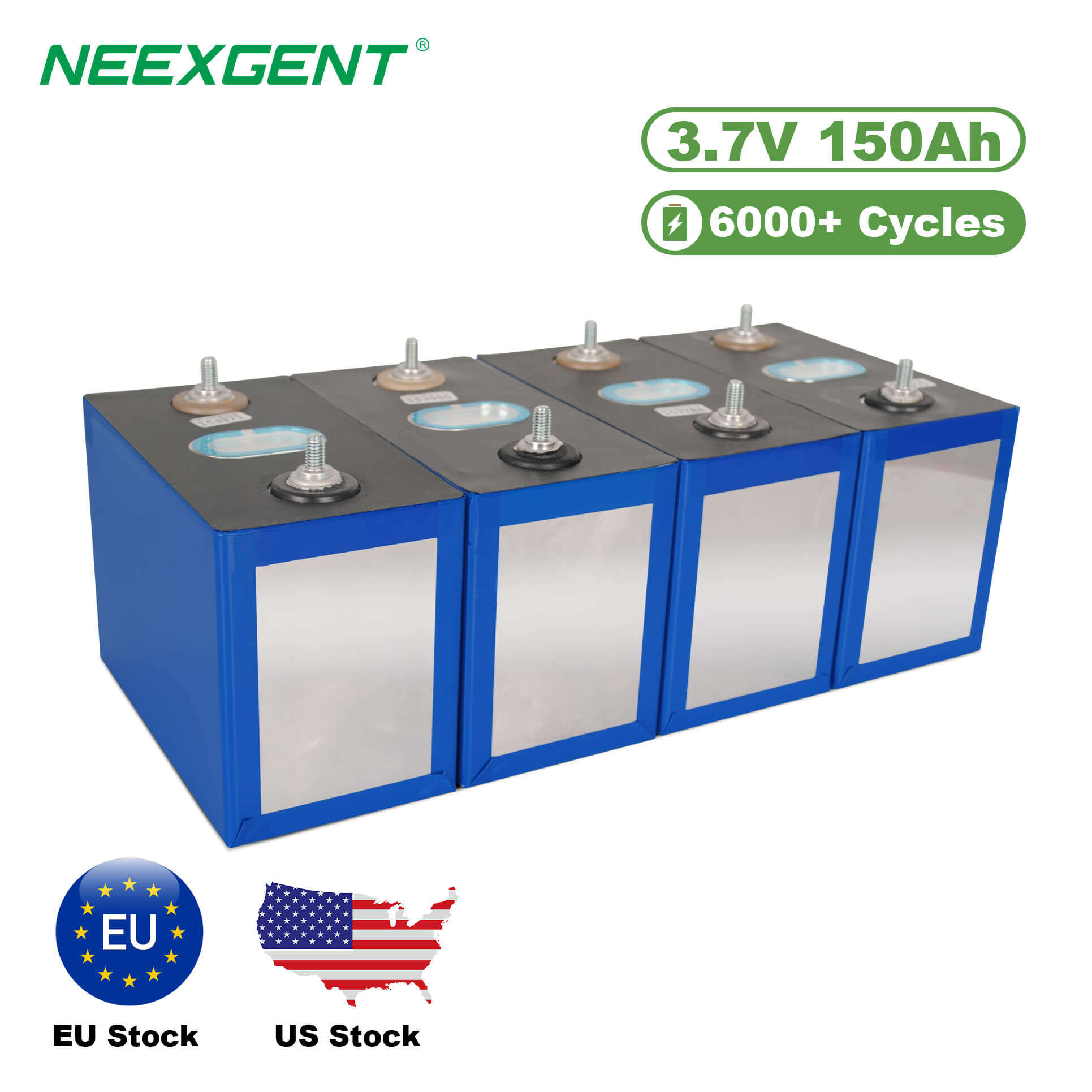As renewable energy gains momentum in the global shift towards sustainability, solar power has emerged as a leading contender. Among the various types of solar panels available, monocrystalline solar panels have gained popularity due to their exceptional efficiency and performance. In this article, we will delve into the advantages of monocrystalline solar panels, compare them with polycrystalline panels, explore their applications in different settings, and discuss their performance in various lighting conditions. So let's dive in and unlock the potential of monocrystalline solar panels!

Neexgent 48v 450w Sollar Panel
Advantages of Monocrystalline Solar Panels for Homes:
Monocrystalline solar panels offer several advantages for residential applications. Their high energy conversion efficiency allows homeowners to maximize their solar energy production in limited spaces. With monocrystalline panels, you can generate more electricity per square foot, making them ideal for homes with limited roof space. Furthermore, their sleek and uniform appearance blends seamlessly with residential architecture, enhancing the overall aesthetics of the property.
Best Monocrystalline Solar Panels for Off-Grid Systems:
For those seeking energy independence, off-grid systems powered by monocrystalline solar panels are a reliable solution. Monocrystalline panels are known for their ability to generate electricity even in low-light conditions, ensuring continuous power supply in remote locations. When combined with advanced energy storage systems, off-grid setups with monocrystalline solar panels can provide sustainable power for off-grid homes, cabins, or even recreational vehicles.
Comparing Monocrystalline Solar Panels vs. Polycrystalline:
While monocrystalline solar panels have their distinct advantages, it is essential to consider the differences between monocrystalline and polycrystalline panels. Monocrystalline panels, made from a single crystal structure, exhibit higher efficiency rates compared to polycrystalline panels. Polycrystalline panels, on the other hand, are slightly more affordable but have lower efficiency. The choice between the two ultimately depends on your specific needs, budget, and available installation space.
Monocrystalline Solar Panels for Commercial Applications:
The exceptional efficiency and performance of monocrystalline solar panels make them highly suitable for commercial applications as well. From large-scale solar farms to industrial buildings, monocrystalline panels can maximize energy production and deliver significant cost savings over time. Commercial entities can capitalize on the long-term benefits of monocrystalline solar panels, such as reduced electricity bills and a smaller carbon footprint, all while showcasing their commitment to sustainable practices.
Efficiency of Monocrystalline Solar Panels in Low Light Conditions:
Solar energy generation is not limited to sunny days alone. Monocrystalline solar panels excel in converting sunlight into electricity even in low light conditions. Their unique design and composition allow them to capture and utilize diffused sunlight, making them highly efficient in cloudy or overcast weather. This makes monocrystalline panels a reliable choice for regions with variable weather patterns or areas prone to frequent cloud cover.
Installing Monocrystalline Solar Panels on a Flat Roof:
Flat roofs offer a convenient and accessible space for solar panel installations. Monocrystalline solar panels can be seamlessly integrated into flat roof systems using specially designed mounting structures. Their adaptability to different mounting options makes them an excellent choice for commercial buildings or residential properties with flat roof designs. By harnessing the potential of flat roofs with monocrystalline panels, property owners can unlock the full benefits of solar energy.
Monocrystalline solar panels stand out as a reliable and efficient solution for harnessing solar energy. Their advantages for residential use, off-grid systems, commercial applications, and performance in low light conditions make them a popular choice among homeowners, businesses, and organizations aiming to transition to sustainable energy sources. When comparing monocrystalline solar panels with polycrystalline alternatives, it's crucial to consider factors such as efficiency, cost, and available space to make an informed decision.
The versatility of monocrystalline panels extends to the installation on flat roofs, providing an opportunity for property owners to maximize their solar potential. With the right mounting structures, monocrystalline panels can seamlessly integrate into the design of flat roofs, allowing for efficient energy generation while utilizing previously unused space.
The ongoing advancements in solar technology continue to improve the efficiency and performance of monocrystalline solar panels. Investing in these panels not only helps reduce dependence on conventional energy sources but also contributes to a sustainable future by reducing carbon emissions and promoting environmental stewardship.
As the demand for renewable energy increases, it's worth exploring the benefits and potential of monocrystalline solar panels. Whether you're a homeowner looking to optimize your energy production or a business aiming to reduce operational costs, monocrystalline solar panels offer a reliable and efficient solution. Embracing solar energy through monocrystalline panels can lead to long-term savings, a reduced carbon footprint, and a positive impact on the environment.
By harnessing the power of monocrystalline solar panels, individuals, communities, and businesses can take significant steps towards achieving energy independence, reducing environmental impact, and shaping a sustainable future for generations to come.
It's important to note that the benefits of monocrystalline solar panels extend beyond their immediate advantages. Investing in solar energy not only provides long-term financial benefits but also contributes to a cleaner and more sustainable planet. By adopting monocrystalline solar panels, individuals and businesses play a crucial role in reducing greenhouse gas emissions, mitigating climate change, and creating a greener future.
Governments and various organizations worldwide are increasingly recognizing the importance of renewable energy and providing incentives for solar installations. These incentives may include tax credits, grants, or favorable feed-in tariff programs, making the transition to solar power even more attractive and financially viable. By capitalizing on these incentives, individuals and businesses can further enhance the economic benefits of installing monocrystalline solar panels.
Monocrystalline solar panels offer a compelling solution for maximizing energy efficiency and reducing reliance on traditional energy sources. Their exceptional efficiency, adaptability to different applications, and performance in various lighting conditions make them a top choice for homeowners, businesses, and organizations seeking sustainable energy solutions. As the world embraces renewable energy, investing in monocrystalline solar panels not only brings immediate benefits but also contributes to a cleaner and more sustainable future for all. So, join the solar revolution today and unlock the full potential of monocrystalline solar panels!

